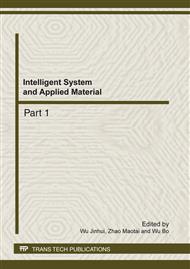p.891
p.896
p.901
p.907
p.912
p.916
p.920
p.925
p.930
Analyses of Coupling Effect of Load Simulator of Aircraft Control Surface on Actuator Simulation Loop
Abstract:
At present the design of the aircraft control surface simulator is all about how to eliminate the redundant moment and increase the tracking accuracy of load simulator. In this paper, for the abnormal phenomena appeared in the semi-physical simulation loop of the load simulator, a simulation analysis was made to illustrate that there is a strong coupling effect between the load simulator and the actuator simulation loop, and increasing the tracking accuracy of load simulator simply can not eliminate the effect on the semi-physical simulation system. Therefore, there are some limitations in the design of load simulator based on its performance indexes only.
Info:
Periodical:
Pages:
912-915
Citation:
Online since:
February 2012
Authors:
Keywords:
Price:
Сopyright:
© 2012 Trans Tech Publications Ltd. All Rights Reserved
Share:
Citation:


